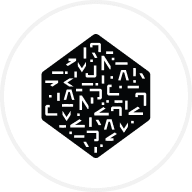
USDT
Tether 价格
$1.0001
-$0.00010
(-0.01%)
过去 24 小时的价格变化

您感觉 USDT 今天会涨还是会跌?
您可以通过点赞或点踩来分享对该币种今天的涨跌预测
投票并查看结果
Tether 市场信息
市值
市值是通过流通总应量与最新价格相乘进行计算。市值 = 当前流通量 × 最新价
流通总量
目前该代币在市场流通的数量
市值排行
该资产的市值排名
历史最高价
该代币在交易历史中的最高价格
历史最低价
该代币在交易历史中的最低价格
24 小时最高
$1.0005
24 小时最低
$0.99996
历史最高价
$1.0130
-1.27% (-$0.01283)
最后更新日期:2023年3月13日
历史最低价
$0.95145
+5.11% (+$0.048680)
最后更新日期:2022年5月12日
USDT 计算器


Tether 价格表现 (美元)
Tether 当前价格为 $1.0001。Tether 的价格在过去 24 小时内下跌了 -0.01%。目前,Tether 市值排名为第 0 名,实时市值为 $1,456.77亿,流通供应量为 145,648,071,863 USDT,最大供应量为 145,648,071,863 USDT。我们会实时更新 Tether/USD 的价格。
今日
-$0.00010
-0.01%
7 天
+$0.00013000
+0.01%
30 天
+$0.0012300
+0.12%
3 个月
+$0.00013000
+0.01%
关于 Tether (USDT)
此评级是欧易从不同来源收集的汇总评级,仅供一般参考。欧易不保证评级的质量或准确性。欧易无意提供 (i) 投资建议或推荐;(ii) 购买、出售或持有数字资产的要约或招揽;(iii) 财务、会计、法律或税务建议。包括稳定币和 NFT 的数字资产容易受到市场波动的影响,风险较高,波动较大,可能会贬值甚至变得一文不值。数字资产的价格和性能不受保证,且可能会发生变化,恕不另行通知。您的数字资产不受潜在损失保险的保障。 历史回报并不代表未来回报。欧易不保证任何回报、本金或利息的偿还。欧易不提供投资或资产建议。您应该根据自身的财务状况仔细考虑交易或持有数字资产是否适合您。具体情况请咨询您的专业法务、税务或投资人士。
展开更多
- 官网
- 白皮书
- 区块浏览器
关于第三方网站
关于第三方网站
通过使用第三方网站(“第三方网站”),您同意对第三方网站的任何使用均受第三方网站条款的约束和管辖。除非书面明确说明,否则 OKX 及其关联方(“OKX”)与第三方网站的所有者或运营商没有任何关联。您同意 OKX 对您使用第三方网站而产生的任何损失、损害和任何其他后果不承担任何责任。请注意,使用第三方网站可能会导致您的资产损失或贬值。
Tether 常见问题
什么是稳定币?
稳定币是一种加密货币,通过将其价值与某些加密货币、大宗商品、法定货币或金融工具挂钩,或利用套利系统,实现固定价格。
USDT的价格会上涨吗?
作为一种稳定币,Tether的价格被设计为固定在1美元,因此不太可能出现任何显著的上涨或下降。
然而,USDT的价格有几次跌破1美元。这通常发生在市场高度不确定性和恐惧的时候。但是,USDT已经成功地恢复了势头。
此外,USDT的价格不太可能偏离1美元,因为只要有积极的市场情绪,代币可以兑换等额的美元。
USDT是一项好的投资吗?
在欧易交易所,我们建议你在客观投资之前研究任何加密货币。加密货币被认为是一种高风险资产,容易出现大幅价格波动。因此,我们希望您只投资你愿意承担风险的资产。
此外,像所有加密货币一样,USDT是波动的,并带有投资风险。因此,在投资之前,你应该做深入的自我学习研究(DYOR),评估你的风险偏好。
我可以在哪里购买USDT代币?
您可以从欧易交易所购买 USDT。欧易交易所提供了许多 USDT 交易对,其中最受欢迎的是 BTC/USDT 以及 ETH/USDT 等交易对。当然,您也可以使用法定货币直接 购买 USDT 或者将 您的数字货币兑换为 USDT 。
在欧易交易所进行交易之前你需要先 创建交易账户。要用您喜欢的法币购买 USDT,请点击顶部导航栏“买币”下的“刷卡购买”。要交易 BTC/USDT 或 ETH/USDT,点击“交易”下的“基础交易”。在同一个选项卡下,单击“闪兑”将加密货币转换为 USDT 代币。
或者,访问我们新的数字货币计算器功能。选择 USDT 代币和您期望转换的期望使用的法定法币,以查看大致的实时兑换价格。
如何安全地存储USDT代币?
存储USDT代币的最佳方法是在您的欧易钱包中,它为您的资金提供最大的安全性,并允许您随时自由使用它们。
Tether 今天值多少钱?
目前,一个 Tether 价值是 $1.0001。如果您想要了解 Tether 价格走势与行情洞察,那么这里就是您的最佳选择。在欧易探索最新的 Tether 图表,进行专业交易。
数字货币是什么?
数字货币,例如 Tether 是在称为区块链的公共分类账上运行的数字资产。了解有关欧易上提供的数字货币和代币及其不同属性的更多信息,其中包括实时价格和实时图表。
数字货币是什么时候开始的?
由于 2008 年金融危机,人们对去中心化金融的兴趣激增。比特币作为去中心化网络上的安全数字资产提供了一种新颖的解决方案。从那时起,许多其他代币 (例如 Tether) 也诞生了。
Tether 的价格今天会涨吗?
查看 Tether 价格预测页面,预测未来价格,帮助您设定价格目标。
免责声明
本页面的社交内容 (包括由 LunarCrush 提供支持的推文和社交统计数据) 均来自第三方,并按“原样”提供,仅供参考。本文内容不代表对任何数字货币或投资的认可或推荐,也未获得欧易授权或撰写,也不代表我们的观点。我们不保证所显示的用户生成内容的准确性或可靠性。本文不应被解释为财务或投资建议。在做出投资决策之前,评估您的投资经验、财务状况、投资目标和风险承受能力并咨询独立财务顾问至关重要。过去的表现并不代表未来的结果。您的投资价值可能会波动,您可能无法收回您投资的金额。您对自己的投资选择自行承担全部责任,我们对因使用本信息而造成的任何损失或损害不承担任何责任。提供外部网站链接是为了用户方便,并不意味着对其内容的认可或控制。
请参阅我们的 使用条款 和 风险警告,了解更多详情。通过使用第三方网站(“第三方网站”),您同意对第三方网站的任何使用均受第三方网站条款的约束和管辖。除非书面明确说明,否则欧易及其关联方(“OKX”)与第三方网站的所有者或运营商没有任何关联。您同意欧易对您使用第三方网站而产生的任何损失、损害和任何其他后果不承担任何责任。请注意,使用第三方网站可能会导致您的资产损失或贬值。本产品可能无法在所有司法管辖区提供或适用。
请参阅我们的 使用条款 和 风险警告,了解更多详情。通过使用第三方网站(“第三方网站”),您同意对第三方网站的任何使用均受第三方网站条款的约束和管辖。除非书面明确说明,否则欧易及其关联方(“OKX”)与第三方网站的所有者或运营商没有任何关联。您同意欧易对您使用第三方网站而产生的任何损失、损害和任何其他后果不承担任何责任。请注意,使用第三方网站可能会导致您的资产损失或贬值。本产品可能无法在所有司法管辖区提供或适用。
USDT 计算器































社媒平台热度